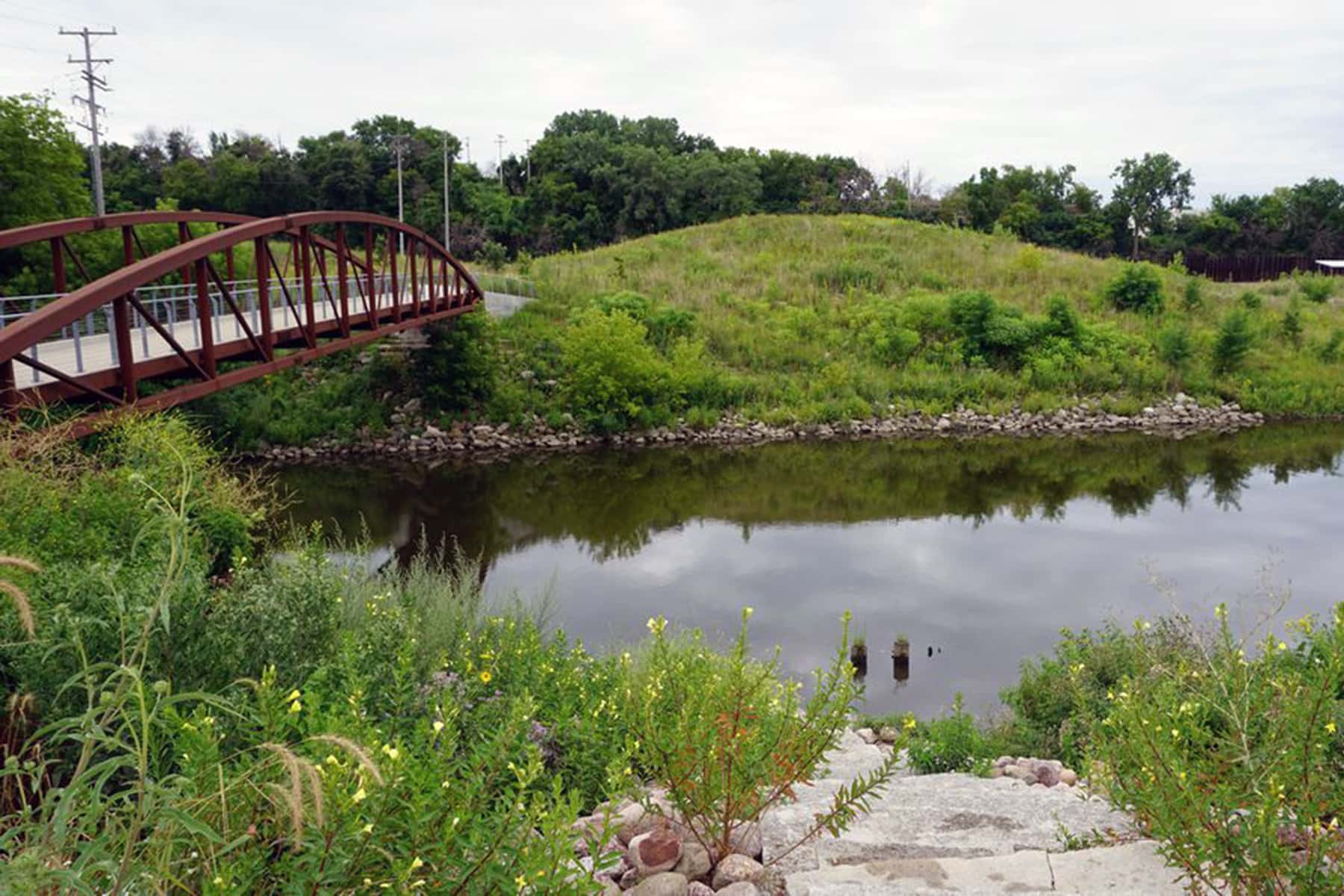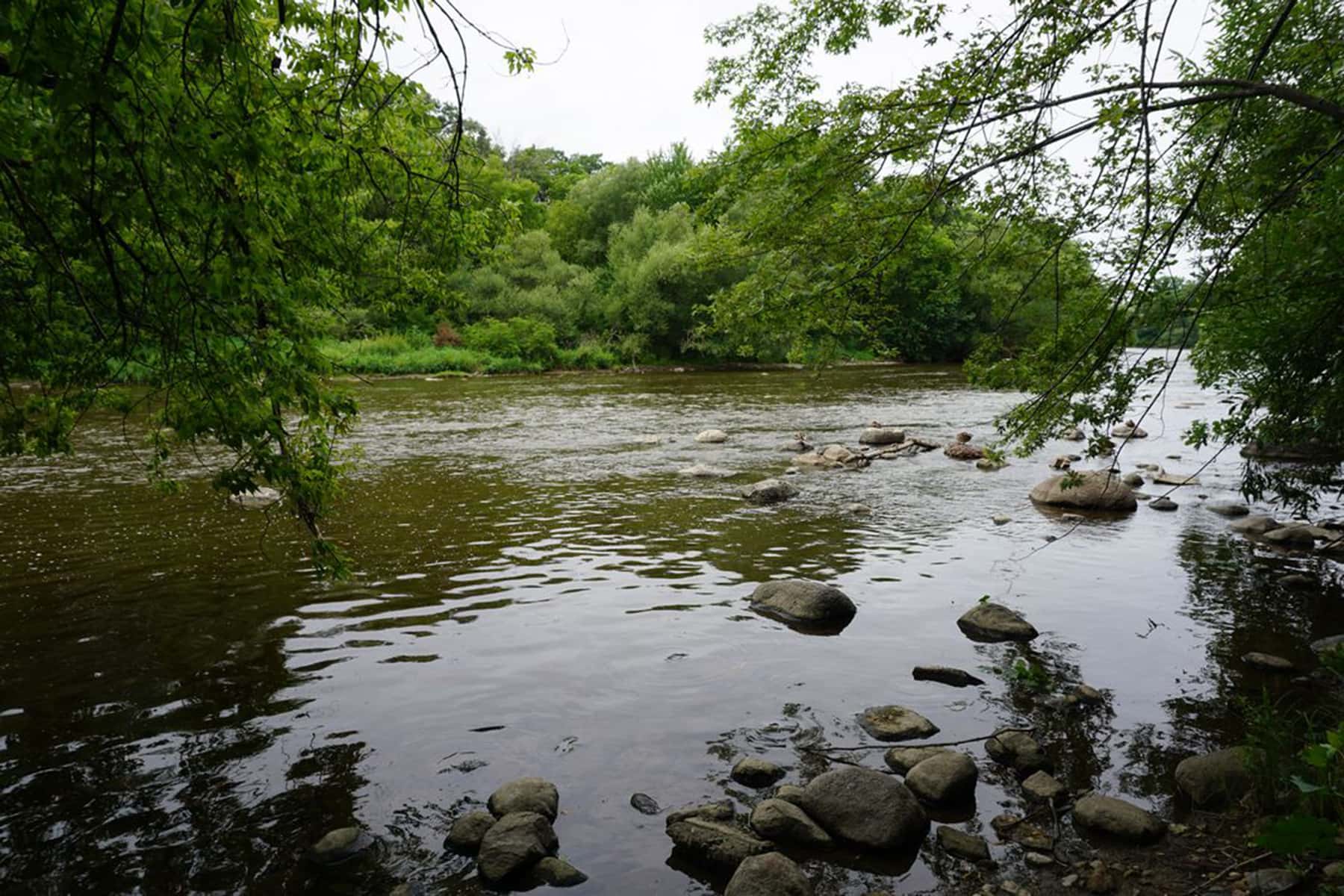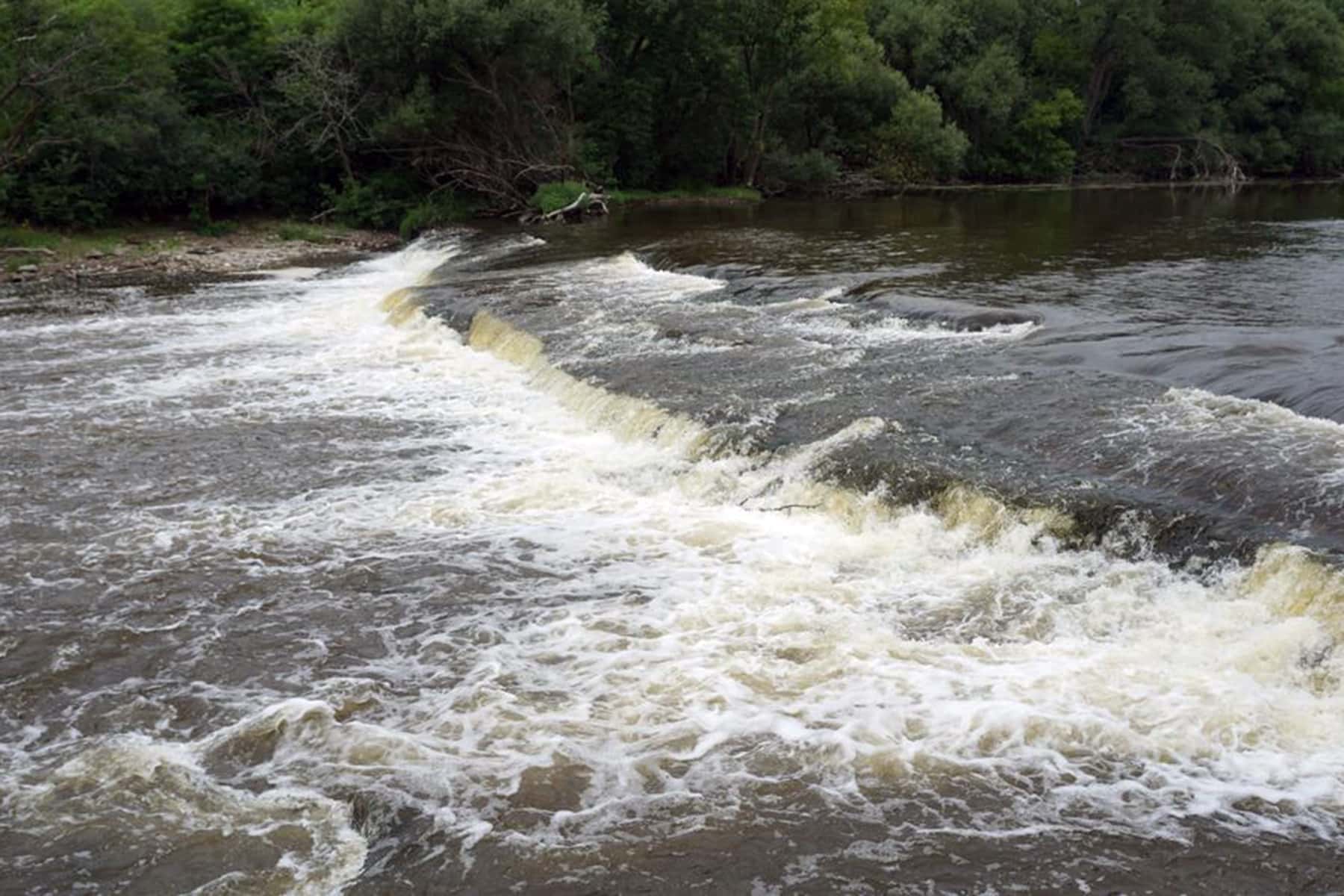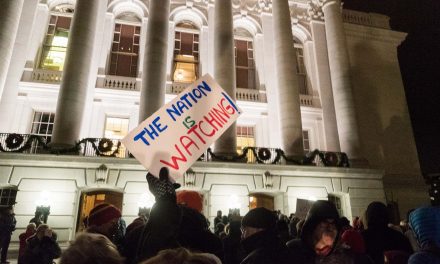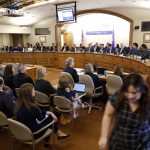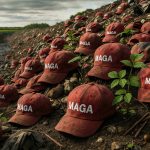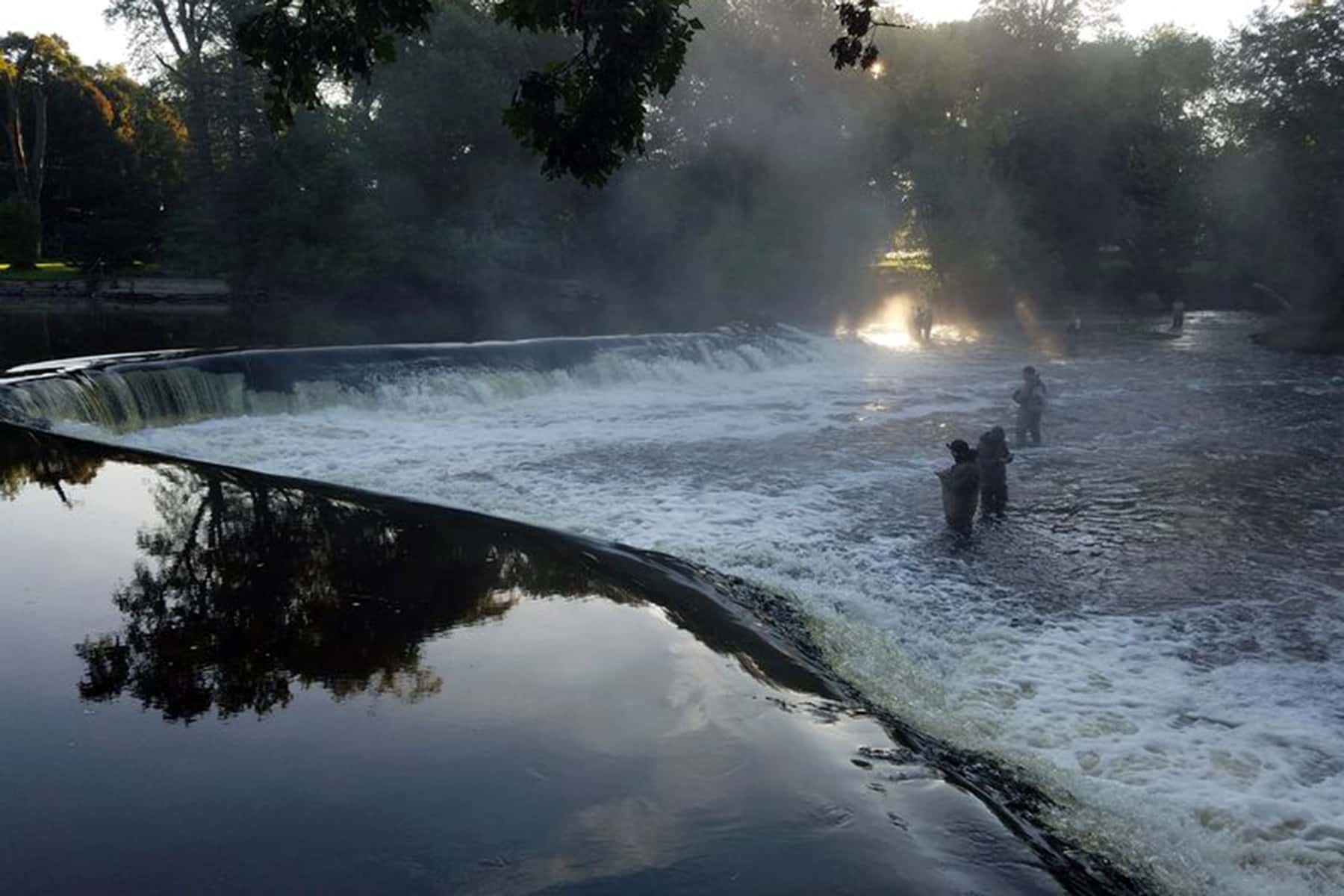
In the 1960s, Milwaukee had an alewives problem. The invasive fish managed to take over the rivers throughout the city and went completely out of control.
They would die off in mass numbers on the beach and cause a pretty awful smell, said Tim Vargo, manager of research and community science at Milwaukee’s Urban Ecology Center. But the city had a plan to fix it. The Department of Natural Resources introduced salmon to the rivers to control the alewives, which are salmon’s preferred prey. And as a bonus, now locals would be able to enjoy a great sport fish. The fish, both Coho and Chinook salmon, were stocked into the Milwaukee and Menomonee Rivers.
“We stocked them there so they would imprint in those streams, and when it was time to reproduce, they’d come back to the streams, fill up the streams, and be available for fishermen,” said Brad Eggold, the Great Lakes District fisheries supervisor at the Wisconsin Department of Natural Resources.
It worked, at first. The alewives were brought under control, and fishermen had their fill of large salmon. But as the years went on, the water quality in Milwaukee got worse and worse. In 1984, 20 years after the fish were introduced, the city conducted an electroshocking study on a two-mile stretch along the Milwaukee River. Electroshocking is a common survey method for fish with no ill effects for the fish or waterways; the fish are stunned for a moment so scientists can evaluate the state of that species, then they return to normalcy and are released. The results of the Milwaukee River study were dismal.
“The study only found about eight species of fish, mostly trash species like carp,” Vargo said.
The problem was speculated to be a combination of things: runoff from cattle pastures into the rivers, waste from slaughterhouses, human sewage, and the North Avenue Dam, a dam built in 1835 that was blocking some clean water streams. It came to a head in the spring of 1993, when Milwaukee residents mysteriously began coming down with gastrointestinal illness. Anti-diarrheal medicine was sold out in many neighborhood pharmacies. Large absences were reported at schools and businesses. In late March, calls started coming in to the Milwaukee Health Department from people suffering from this surprise illness. At this point, though, no one suspected it was the water supply.
On April 5, 1993, the Wisconsin Division of Health came to help investigate the cause of the problem. Together, the state and city officials determined the one thing everyone had in common: they all used the tap water. The city’s water supply was pulled in from a combination of streams and Lake Michigan and sent to two filtration plants that served the entire city. Water testing and subsequent stool testing confirmed an invisible and largely unknown parasite, Cryptosporidium, was swimming free through the city’s water supply. Officials issued an order to boil tap water for five minutes before using it and opt for bottled water if possible while they cleaned the system.
Since most of the reported illness was on the city’s south side, officials ordered the water plant in that part of the city be closed while they determined the source of the Crypto invasion. It turned out that plant operators made an error. Some of the equipment failed and allowed the Crypto in (the exact source of the Crypto was never determined), and the operators were not paying attention to the crude water quality indicators that were in place. Also, the plant was cleaning water with chlorine, and chlorine does not kill Crypto.
It took ten days for the errors to be fixed and the water supply cleaned. The water treatment plant remained closed until June that year. All told, 403,000 people got sick from the Crypto outbreak, which was the largest waterborne illness outbreak in U.S. history. At least 69 people died — all with compromised immune systems, and most of them AIDS patients.
As a result of the outbreak, the city drastically altered the water treatment methods and led a massive cleanup of source water, which included the rivers where the salmon were stocked. In the five years following the Crypto outbreak, Milwaukee Water Works upgraded both water treatment plants and installed new water monitoring equipment providing minute-by-minute counts of particles in the water. If too much is detected, the filter shuts down and does not let any other water through. Ozone water treatment replaced chlorine treatment.
Since 1993, the city has spent more than $417 million on continuing water treatment and cleanup infrastructure and programs. Residents regularly help by hosting and attending river cleanups. The North Avenue Dam was removed in 1997. Now, Milwaukee has some of the cleanest water in the country, both in the taps and in the rivers.
The fish numbers are consistently rising, and other wildlife is returning to the rivers as well, like beavers, otters and deer. Study results back the phenomenon, as well. That electroshocking study was repeated in the same place about 20 years after the rivers were cleaned. This time about 40 species of fish were found, noted in the report “Changing Habitat and Biodiversity of the Lower Milwaukee River and Estuary” by the Wisconsin Department of Natural Resources, Southern Lake Michigan Fisheries Work Unit. The salmon runs have increased in strength since the rivers were cleaned up, too, Vargo said.
Salmon runs are a phenomenon when the fish head back upriver to the spot they were introduced in order to spawn. You can watch them from the riverbanks, seeing the salmon swim en masse to get to their destination.
“These fish show incredible fidelity in homing back to where we stocked them,” Eggold said.
In Milwaukee, the best months to see the salmon runs are September and October for Chinook salmon, and October and November for Coho salmon.
“It’s Milwaukee’s version of charismatic megafauna,” said Vargo, who regularly takes his children to see the salmon runs. “When you see them, your imagination goes wild because they’re underwater. There’s magic and power in seeing these creatures right at your feet. Those are the moments that increase the curiosity, the desire to learn more, the desire to act sustainably. They’re big and they splash, and if that causes people to want to know more and then want to conserve, that’s a huge asset.”
Eggold and Vargo recommend four different spots to see the salmon runs within the Milwaukee city limits. Just be sure to keep an eye on the weather before you go.
“A lot of the spawning timing and strength of the run is really weather dependent, mostly on water flow and water depth,” Eggold said. “If we have a dry spring or fall and then get a bunch of rain all of a sudden, it will spawn a migration.”
Miller Park
Home stadium of the Milwaukee Brewers, Miller Park sits right along the Menomonee River, which is mirrored by the Hank Aaron State Trail. On game days in the fall—or on any other day during the spawning season (parking is allowed in the lots for free when there aren’t games)—use the staircase in the Uecker lot to go down to the river and watch the fish. They’re visible anywhere along that part of the path. The stairs are right next to the walkway that goes over the river and to the stadium. If it’s a game day and you’re not attending, but want to see the salmon, park away from the stadium and follow the trail to avoid parking fees.
Three Bridges Park
Follow the Menomonee River east from Miller Park, along the Hank Aaron State Trail, and you’ll come to Three Bridges Park. The 24-acre natural area opened in 2013 after sitting vacant for decades as a defunct railyard. Park in the lot behind Palermo’s Pizza on 33rd Court and walk out onto the Menomonee Bridge to watch the salmon sail through the water. If you want to fish, a staircase right next to the bridge takes you down to the river.
Estabrook Park Beer Garden
In true Wisconsin style, you can grab a quick beer before taking in some nature. Next to the Estabrook Park Beer Garden (the first public beer garden in the country after Prohibition), a pathway takes you down to a waterfall in the Milwaukee River. During the salmon runs, you can see the huge fish shooting out of the water and over the short falls on their way to spawn.
Hubbard Park Lodge
Though Shorewood is considered a suburb, local government still recognizes it as part of the city — and Shorewood’s Hubbard Park is a great place to see the salmon run. The perfect spot for it is by Hubbard Park Lodge, a restaurant and private event space. Follow the path to the lodge until the end, along the left side of the building; go down the stairs, and you’ll reach a secluded viewing area along the Milwaukee River.
Jennifer Billock and Wisconsin Department of Natural Resources
Originally published on Smithsonian Magazine as Milwaukee’s Secret Salmon Runs

